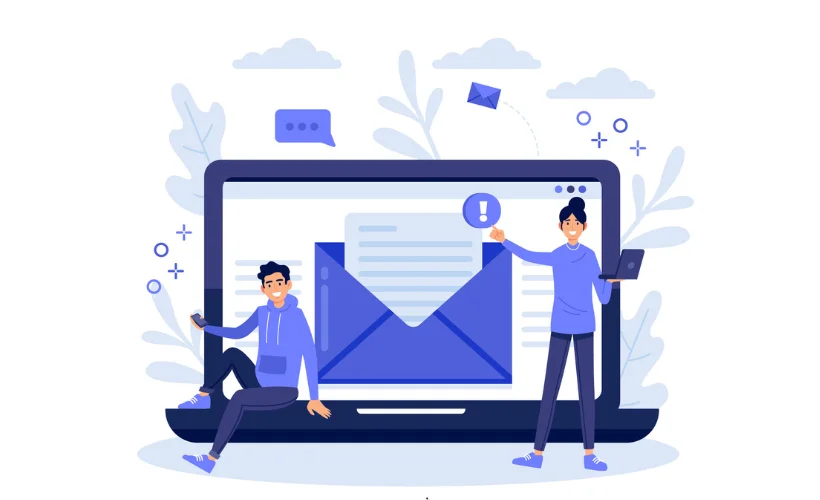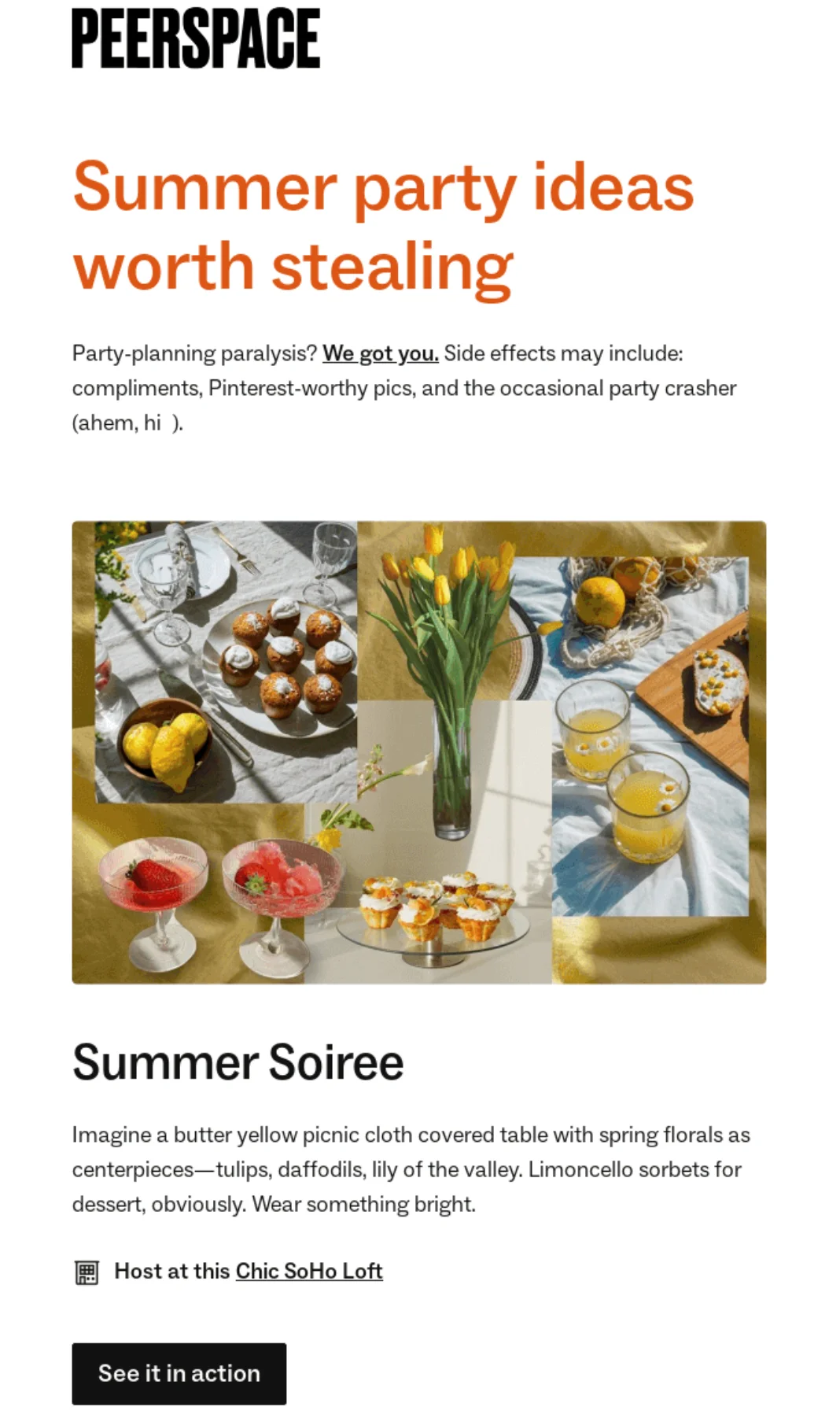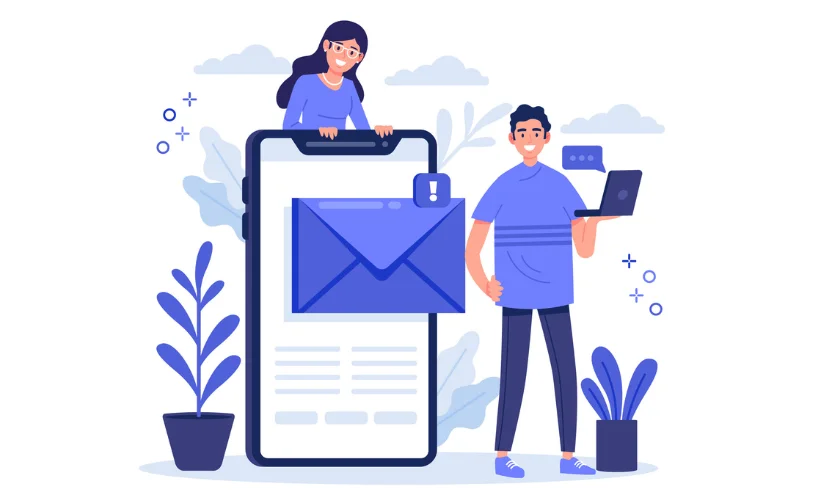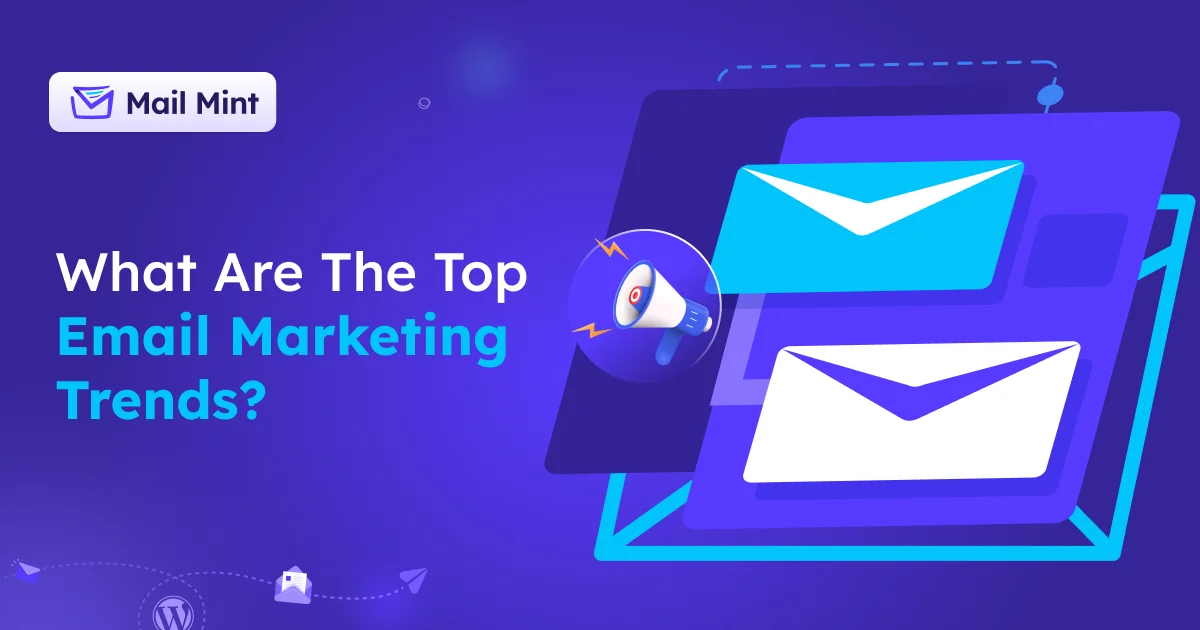If you’re still relying on the same email strategy from 2020, it’s probably not doing much for you right now.
Email marketing still gives one of the highest returns in the game — no doubt about it.
But let’s be honest: the inbox is a different place now. What worked a few years ago isn’t working the same way anymore.
2025 is bringing some serious changes.
AI tools are now writing subject lines. Privacy laws are reshaping how you collect and use data. And inboxes are getting smarter, showing previews before someone even opens your email.
That’s why I’ve put together 10 email marketing trends that are actually relevant right now.
I’ll show you what’s working, what’s outdated, and how you can fine-tune your approach without having to rebuild everything from scratch.
So, let’s walk through it.
10 Email Marketing Trends To Watch In 2025
In short, the top email marketing trends in 2025 include AI-powered email creation, first-party data activation, and behavior-based segmentation. Marketers are also focusing on interactive emails, value-driven newsletters, mobile-first design, and AI-optimized inbox previews.
Other key trends include privacy-first strategies, accessibility improvements, and more human-like automation.
Now, I’ll walk you through the 10 email trends in detail, including what’s worth focusing on and what it’s time to leave behind.
Trend # 1- Smarter Use of AI for Faster Email Creation
Honestly, AI isn’t new anymore. You’ve probably already used tools like ChatGPT or Notion AI to help with your emails. What’s changed in 2025 is how smart marketers are using them and what subscribers now expect from the results.

Sure, these tools can save time. But they don’t always save quality.
According to recent research, 63% of marketers said they’re using AI in their email workflow.
But the ones seeing real results aren’t letting AI do all the work.
If you’re a course creator sending a promo email every week, AI can help you draft a rough version or clean up your wording. But if you copy-paste what the tool spits out and send it straight, your email ends up flat. It sounds like everyone else’s, and your readers will scroll right past it.
Here’s what’s working now and what to avoid:
What works:
- Using AI to suggest subject lines or test different tones
- Speeding up routine writing (like intros, product descriptions, or FAQs)
- Using a paraphrasing tool to rewrite long drafts into tighter, easier-to-read emails
- Brainstorming content outlines when you’re stuck on what to say
What doesn’t:
- Letting AI write the full email and sending it without edits
- Expecting AI to understand your voice or your reader’s mindset
- Using the same AI-generated structure in every email just because it’s quick
Pro tip: Take the first two lines of your next email and run a split test. One version should be yours, and the other straight from AI. Those two lines are the preview text that decides if your email gets opened or not. You’ll quickly see where your voice matters and where AI can assist without replacing you.
Trend # 2- First-Party Data Activation Is Finally the Norm
You’ve probably noticed it’s getting harder to rely on traditional tracking. Meta, Apple, and Google are all locking things down.
So, here’s what smart marketers are doing- building everything around first-party data; the info you collect directly from your audience.
I’m talking about page views, product interactions, link clicks, and purchase history.
So, let’s say someone signs up for your free mini-course but never checks out the paid upgrade. Instead of blasting them with another generic promo, you follow up with something more helpful, like: “Need more time? Here’s what others asked before upgrading.” That feels human & relevant. And it performs.
Here’s what’s working right now and what to leave behind:
What works:
- Segmenting based on actual activity: what they browsed, clicked, or bought
- Setting up automations tied to real-time behavior (like visiting your checkout page)
- Tracking non-sales actions too (like which blog post they read or which email they skipped)
What doesn’t:
- Personalizing just the name or city, and thinking it’s enough
- Sending the same content to everyone, regardless of what they’ve done
- Building segments only around static info like age or job title
Pro tip: Set up one segment based on “viewed product but didn’t buy.” No discount, no pressure. Just send a helpful follow-up — maybe a blog post or FAQ.
Trend # 3- Advanced Segmentation Is Actually Paying Off
After using first-party data, the next shift is how that data gets applied.
For years, marketers have been segmenting email lists. But in 2025, it’s no longer just about tagging users by gender or interest. What’s working now is behavior-based segmentation, grouping people by what they actually do, not just what they tell you.
If someone opens your emails but never clicks, they don’t belong in the same group as someone who clicks every CTA. Or if a subscriber watches 75% of your course preview but hasn’t signed up, they need a different nudge than someone who just downloaded your lead magnet.
This is where segmentation gets serious and effective.
Let’s say you’re a course creator. You’ve got people signing up for your newsletter, some checking out your pricing page, and a few attending your webinar, but not buying. Instead of blasting them all with “Enrollment ends Friday,” you set up three small sequences, each one built around what action they have already taken.
That’s how you get more clicks and more sales.
Mail Mint lets you create advanced & dynamic segmentation to let you align with the current email marketing trends.
Watch this video to learn more.
What works:
- Creating segments based on actions like page views, past purchases, and email engagement
- Sending different emails to people who opened but didn’t click vs. those who clicked but didn’t convert
- Using engagement scores (ex: highly active, warm, cold) to shape your messaging
What doesn’t:
- Sending the same promo to everyone on your list
- Personalizing just the subject line or name while keeping the email body the same
- Creating too many micro-segments and never updating them
Pro tip: Start simple. Pick one behavior-based segment, like “clicked pricing but didn’t buy,” and write just one email for them. When you see the open and click rate spike, you’ll know it’s worth doing more.
Trend # 4- Interactive Emails Are Actually Boosting Engagement (When Done Right)
Interactive emails aren’t new, but what’s changed is how minimal they’ve become. You don’t need to build full-on games inside your emails. That kind of overkill hurts deliverability and slows down load time.
What’s working now is light interaction as polls, yes/no buttons, quick quizzes, or “tap to reveal” sections.
Let’s say you’re sending out a new product teaser. Instead of just writing a big block of copy, you include a poll: “Which feature are you most excited about?” Or maybe you add a short “Take the quiz” section that links to a 3-question guide that leads to the right product for them.
Now the reader is doing something, and that micro-engagement helps you segment better, personalize better, and boost clicks without sounding pushy.
What works:
- Using 1 interaction per email (like a poll or quiz CTA) to keep it lightweight
- Creating feedback loops like “Was this helpful?” buttons to improve future emails
- Keeping interactions functional, not just flashy
What doesn’t:
- Embedding large forms, multi-step surveys, or sliders that break on mobile
- Using scripts that reduce deliverability (especially in Gmail and Outlook)
- Overdoing it; if every email has a new widget, users get fatigued
Pro tip: Add one interactive element in your next newsletter, like a 2-option poll or a reveal block with bonus content. Watch the click-through rate compared to your usual emails. Even small interaction boosts your engagement signals with inbox providers.
Trend # 5- Privacy-First Email Strategy Is Now a Must
The next big focus is privacy. And it’s not just about laws anymore, it’s about trust.
People are more aware than ever of how their data’s being used. Big platforms like Apple, Google, and Meta are cracking down on tracking. That means you can’t rely on third-party data or shady tracking scripts to target and personalize emails anymore.

Instead, you need to own your data and be transparent about how you use it.
If you’re running an online store or course, this means collecting data through opt-ins, purchase history, or engagement, not by buying lists or scraping clicks.
And when someone unsubscribes, you just let them go. You can’t re-add them with sneaky automations.
What works:
- Building your list through clear opt-ins (like free tools, guides, or newsletters)
- Using platforms like Mail Mint that support clean, permission-based lists
- Being honest about how you’ll use subscriber data in your forms and emails
What doesn’t:
- Buying cold email lists or using third-party enrichment tools without consent
- Retargeting users without opt-in confirmation
- Tracking behavior without giving users a way to opt out
Pro tip: Update your opt-in forms to clearly say what people will get and how often. Subscribers who know what to expect are more likely to stick around, and that boosts both deliverability and long-term retention.
Trend # 6- Value-First Newsletters Are Beating Sales Blasts
Once you’ve got privacy and trust in place, the next step is delivering something actually worth reading.
Newsletters have been one of the greatest email marketing trends for a long but in 2025, they only give results if you can deliver something useful to the audience.
Think of it like this: If every email you send feels like a pitch, most subscribers will stop opening. But they’ll actually look forward to hearing from you if you send something that-
- helps them make a decision,
- solve a problem,
- or learn something new,

Let’s say you run a digital product business. Instead of just announcing your new launch, you send a short weekly email breaking down one common mistake your audience makes and how to fix it. That builds trust. And when you do promote something, they’re more likely to care.
What works:
- Sharing tips, examples, or lessons your audience can apply right away
- Creating short, valuable emails that don’t require scrolling forever
- Being consistent — weekly or biweekly sends that they expect
What doesn’t:
- Sending only promo emails with no clear benefit for the reader
- Talking only about your product or your offer
- Treating your list like a one-way sales channel
Pro tip: Pick one thing your audience struggles with and write a 3-line solution. That’s your next email. Keep doing that and you’ll build an email list that pays attention.
Trend # 7- Accessibility in Email Design Is No Longer Optional
Once you’re sending helpful content, the next thing to make sure of is this: Can everyone actually read and use your emails?
Accessibility has become a must in 2025, and it’s not just for legal compliance, but for reach. If your email is hard to read, loads slowly on mobile, or relies too much on images, a big chunk of your audience might skip it or unsubscribe without saying a word.
Let’s say you’re a course creator and your weekly email includes a tip graphic: a screenshot of a slide that breaks down a 3-step framework. But there’s no alt text. So, anyone using a screen reader just hears “image” without any context or info. And on mobile, the text in the image might be too small to even read. You’ve shared something useful, but half your audience never sees it.
What works:
- Using clean layouts, readable font sizes (at least 14–16px), and good color contrast
- Including alt text for every image, especially if it explains something important
- Making links and buttons easy to tap on mobile (at least 44px spacing)
What doesn’t:
- Sending emails with long image-only sections and no text fallback
- Using light gray fonts on white backgrounds or small, hard-to-read text
- Ignoring how your email looks for people using screen readers or dark mode
Pro tip: Start by fixing just one thing: next time you add an image that includes text (like a framework, chart, or stat), write alt text that clearly explains what’s in it. You’ll keep more readers engaged and avoid losing clicks just because someone couldn’t see what you meant.
Trend # 8- Mobile-First Emails Are the New Standard
At this point, it’s not just that some people check emails on their phones; it’s that most people do.
In fact, recent reports show that over 88% of people check their emails from their mobile phone.
So if your email looks great on desktop but breaks on mobile, that’s a real problem. Bad spacing, broken layouts, tiny buttons — these small things add up and kill engagement.

Picture this: You’re running a flash sale and send out a last-call email. On desktop, the design is solid. But on mobile? The headline is cut off, the product image overlaps the button, and the CTA is half off-screen. So, now the most time-sensitive message you had this week? A bunch of subscribers never even saw it properly.
What works:
- Using single-column layouts that resize smoothly on smaller screens
- Keeping subject lines short so they don’t get cut off on mobile previews
- Testing buttons and spacing to make sure everything’s tap-friendly
What doesn’t:
- Using side-by-side columns or wide hero images that don’t scale well
- Writing long blocks of text that make people scroll endlessly
- Forgetting to preview your email on mobile before sending it
Pro tip: When you write or design your next email, check it on your phone first, not after. Scroll through it like a subscriber would. If anything feels tight, clunky, or off-balance, fix that first. Your desktop readers will be fine, it’s the mobile ones who decide whether your email gets read or trashed.
Trend # 9- Inbox Optimization for AI-Powered Email Clients
After getting your mobile experience right, there’s one more layer to optimize: how inboxes present your email before it’s even opened. Ensuring you run an email verify check helps maintain sender reputation and improves the chances of landing in the inbox.
With inboxes like Apple Mail, Gmail, and Outlook rolling out AI-powered features, your email’s subject line and preview are getting scanned and summarized by machines, not just humans.
Litmus reported that 45% of marketers are now using AI in their email campaigns, because these affect open rates just as much as subject lines do.
If the first few lines are too vague or your email starts with fluff, your message might not get shown at all.
Here’s what that looks like: You send an email with a subject line like “Quick update you’ll love,” and the preview line just says “Hey {{First Name}}, hope you’re well.” The inbox doesn’t see anything useful, so it doesn’t highlight your message. But if the email starts with “Here’s the free checklist you asked for,” that’s what the AI shows, and the reader is way more likely to tap in.
What works:
- Starting your email with clear, valuable info in the first 2 lines
- Making subject lines specific and benefit-driven
- Keeping your email structure clean so AI tools can pull the right highlights
What doesn’t:
- Opening with generic greetings or filler lines
- Using vague subject lines that AI filters ignore or flag as low priority
- Writing overly “designed” emails with no real text near the top
Pro tip: Write your subject line and first sentence like they’re a one-two punch. Together, they should tell someone exactly what the email’s about, even before they open it. That’s what today’s inboxes are scanning for.
Trend # 10- Automated Emails Are Getting More Human
Finally, automation isn’t going anywhere, but in 2025, it’s working best when it doesn’t feel automated.
Your automation can’t sound like a robot anymore. It needs to feel like you, even if it’s pre-scheduled.
Say someone signs up for your lead magnet but doesn’t open your follow-up. Instead of blasting them with the next three emails anyway, you pause and resend a simpler version with a “Did you miss this?” subject. Or you swap in a quick story that makes the content feel more relatable.
That’s automation with a personal touch.
What works:
- Triggering emails based on actions (like downloads, clicks, or purchases)
- Writing in a natural, conversational tone instead of sounding like a script
- Adding logic to your automation, like delays, conditions, or skipping steps
What doesn’t:
- Using the same 5-email sequence for everyone, no matter their behavior
- Writing emails that sound like they came from a template
- Ignoring open and click behavior when sending follow-ups
Pro tip: Review one of your automations this week. Rewrite the first email to sound like you wrote it, not a bot. Add a condition to skip the next email if they already took action. Small edits like that can double your replies or clicks, without building a new funnel from scratch.
What To Focus On Next?
You’ve seen the email trends. Some of them are brand new, some are just getting sharper.
But the core of email marketing hasn’t changed: give people value, build trust, and make it easy for them to take the next step. That’s what keeps your emails relevant, no matter how inboxes or algorithms evolve.
Now it’s your turn to test. Don’t wait to build the perfect strategy. Pick one or two email marketing trends from this list, try them in your next few campaigns, and see how your audience responds.
What works for others might not work for you, but what matters is that you’re adapting, testing, and learning with every send.
FAQs
1. What’s the latest email marketing news for 2025?
Get the latest email marketing news to see how platforms like Gmail and Apple Mail are rolling out AI-powered previews, stricter privacy filters, and mobile-first layout updates.
2. What is the future of email marketing automation?
The future of email marketing means more human-sounding sequences, smart behavior triggers, and AI-driven personalization—all working together without feeling automated.
3. Which email trends are driving higher engagement this year?
Key email trends this year include interactive content, advanced segmentation based on first-party data, value-first newsletters, and accessibility improvements.
4. How can I improve my email marketing analytics in 2025?
Focus on tracking clicks, conversions, replies, and engagement signals rather than just open rates, especially with privacy changes affecting inbox data.
5. How are privacy regulations shaping email marketing trends?
Privacy regulations are pushing marketers to adopt privacy-first strategies, use first-party data responsibly, and make unsubscribe/preferences links clearer than ever.

![10 Latest Elearning Trends Every Course Creators Should Follow [2025] 6 Latest eLearning Trends](https://getwpfunnels.com/wp-content/uploads/2025/08/eLearning-Trends.webp)
![What Is A Marketing Automation Funnel - Ultimate Beginner's Guides [2024] 7 Marketing Automation Funnel](https://getwpfunnels.com/wp-content/uploads/2024/04/42.-What-Is-A-Marketing-Automation-Funnel-Beginners-Guides.webp)

![How to Increase Conversion of Your Affiliate Marketing Sales Funnel [2024] 9 Affiliate Marketing Sales Funnel](https://getwpfunnels.com/wp-content/uploads/2023/06/How-To-Boost-Sales-Funnel-Conversion-Using-Affiliates-Influencers.png)
![How To Create A Fitness Landing Page in 4 Easy Steps + Examples [2025] 10 Fitness Landing page](https://getwpfunnels.com/wp-content/uploads/2025/02/Fitness-Landing-1.webp)
![How to Create and Sell Courses Online in WordPress? Beginners Guide [2025] 11 Create and Sell Online Courses in WordPress](https://getwpfunnels.com/wp-content/uploads/2022/08/Create-and-Sell-Online-Courses-in-WordPress.png)